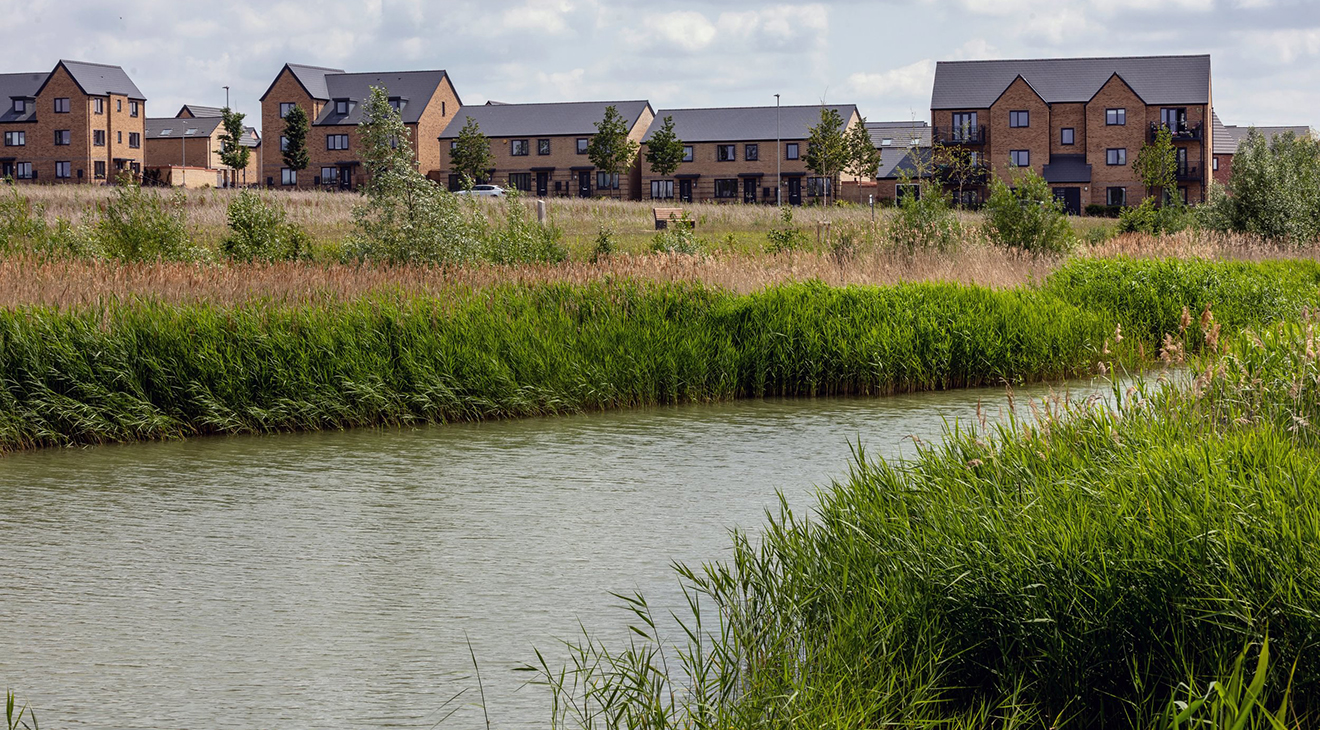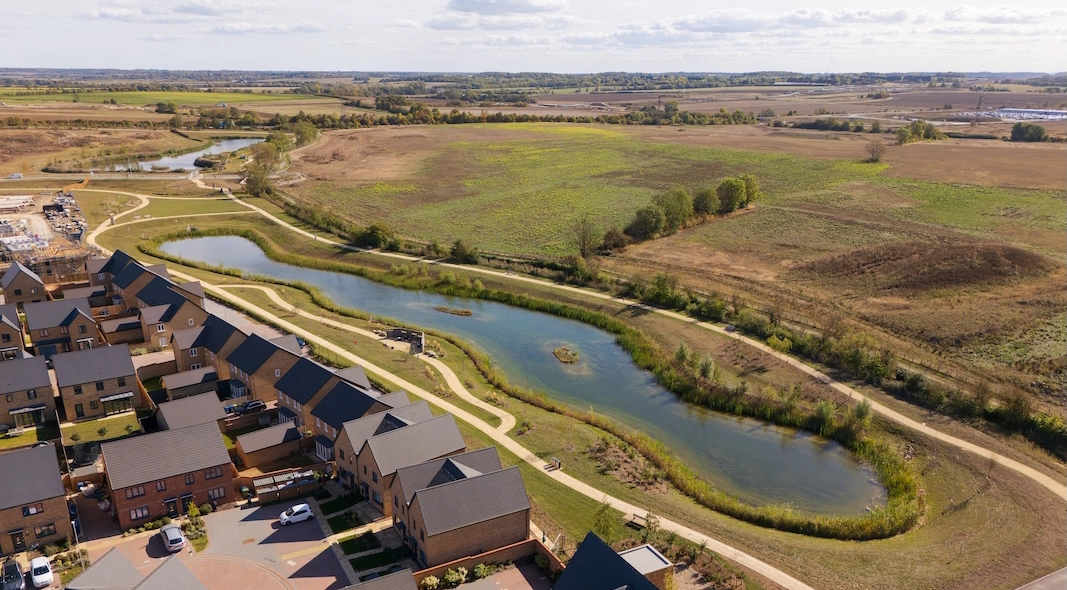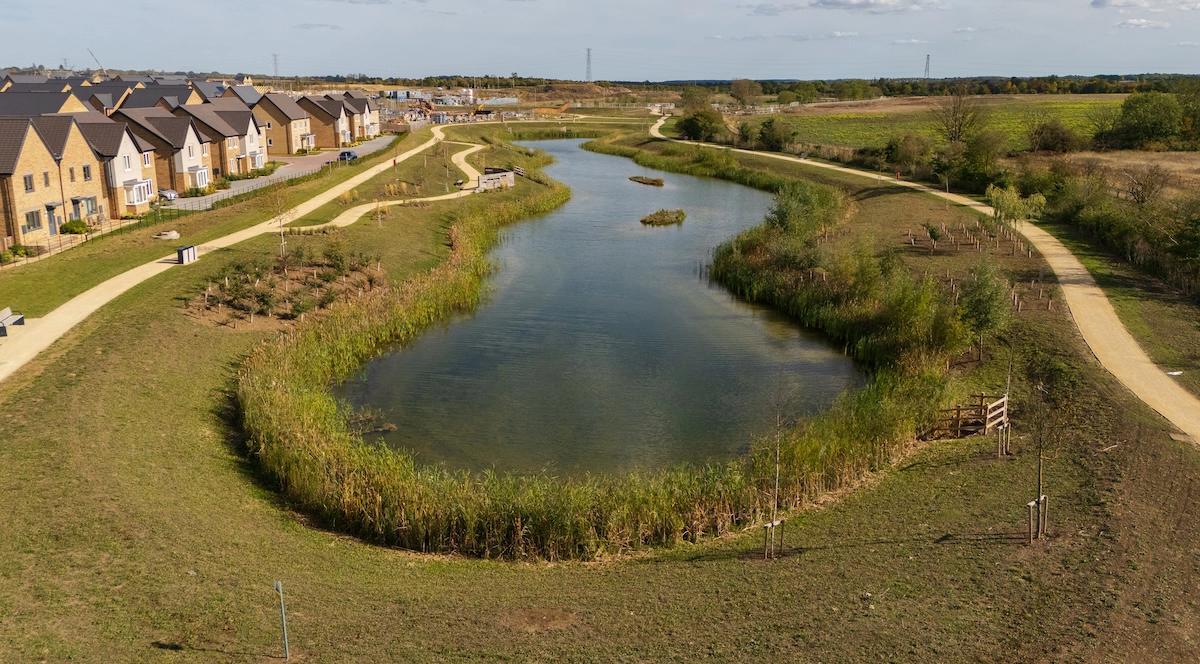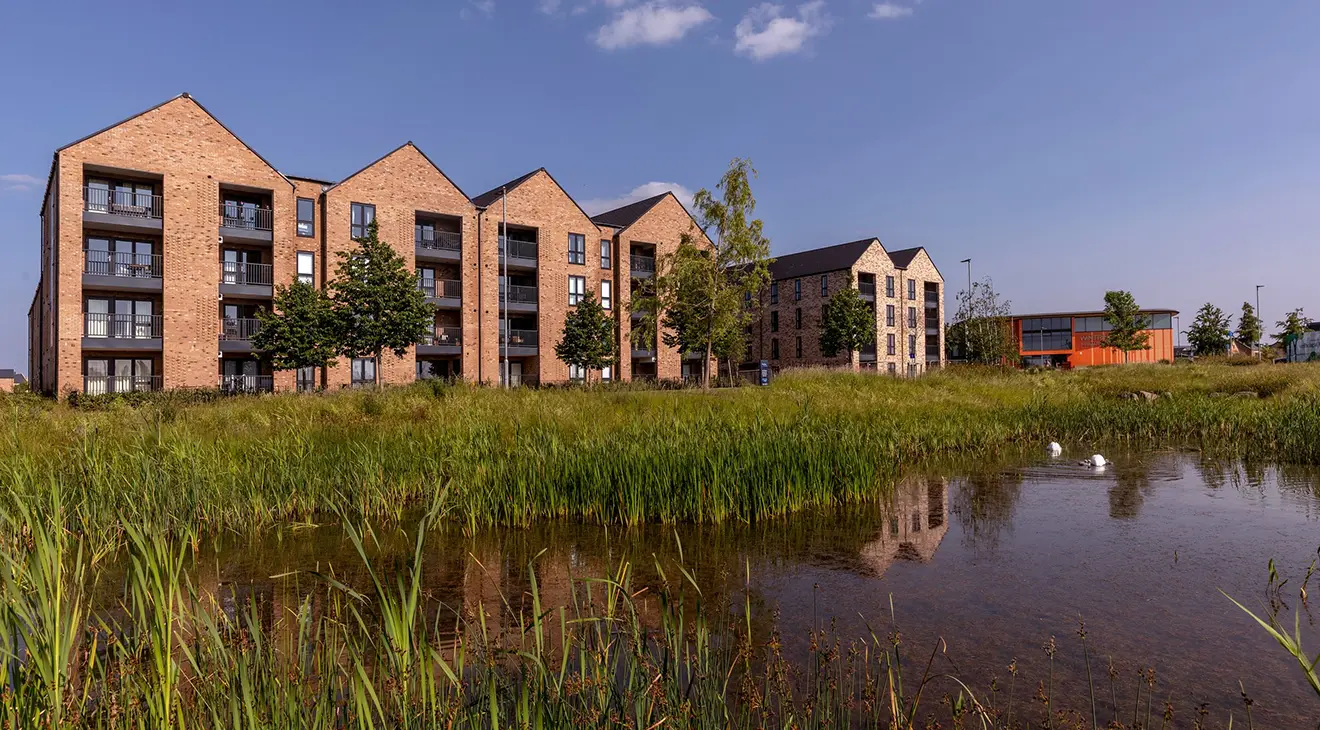Sustainability
At Wintringham, we build sustainable approaches into our design and development processes from the very beginning. We focus on three interconnected challenges: climate change; nature and biodiversity; and the health and wellbeing of our communities.
Did you know?
61,000 m³
of water storage has been created so far at Wintringham
As well as setting the standards for design and quality in the Design Code, Urban&Civic’s Sustainability Framework helps ensure a low carbon development with housebuilders delivering energy and water efficient new homes, with lower carbon materials.
The water story
All new developments need a plan to manage surface water - now and in the future - with consideration given to a variety of extreme weather scenarios including a 1 in 100 year storm, flood or rainfall event as well as climate change.
Sustainable Drainage System (SuDS)
Before any development took place, rainwater would run straight off the surface or infiltrate through the ground and run to its nearest watercourse. Now a range of carefully sized and designed ponds act as storage systems, filling up during periods of rainfall, holding water back and gradually emptying following storm events to ensure the wider water network can cope, ideally without flooding beyond the areas designated for this along the River Ouse.
Wintringham Waters
Wintringham lies within the catchment of the River Great Ouse and is intersected by Wintringham Brook and the Hen Brook, flowing east to west from the eastern side of the A428. Monks Brook runs through the development from the A428 near Cambridge Road to Wintringham Brook.
Alongside the historic watercourse of Wintringham Brook, Wintringham Waters enables modern engineering and innovative nature-based solutions to build in the development’s resilience to climate change.
These features are the foundation of developing a water strategy to support the new community at Wintringham and play our part in holding water back to support the drive to make St Neots more resilient to flooding.
Learn how we're managing water at Wintringham in our video with James Patmore, Director of Ecology at BMD and Rebecca Britton from Urban&Civic.
The ponds
The three large ponds of Wintringham Waters have been designed to protect more sensitive habitats and species, whiler providing opportunities for people to engage with nature.
- Western Pond: Designed as a shallow pond, with space for varying water heights to support species that like living on the water’s edge: perfect for attracting amphibians and providing breeding grounds for insects.
- Central Pond: Features a bird hide set in species rich grassland and two gravelled islands. This setup is tailored to encourage wetland birds to land and use the lake with confidence, offering safe nesting spots and feeding opportunities.
- Eastern Pond: Provides shrubs and trees, grasslands and variable waterside edges to support a range of species. It also contains a grassed island that serves as an ideal habitat for ground-nesting birds to breed and feed safely.
Wildlife supported
Birds to look out for include Reed Warblers, Little Grebes, Lapwings, and Kingfishers. The carefully designed ponds provide ideal conditions for amphibians like Frogs and Smooth Newts, while sunny, sheltered areas attract reptiles such as Common Lizards and Grass Snakes. Larger mammals, including Otters, may be drawn to the waterways, while Hedgehogs and Field Mice find refuge in the surrounding grasslands. Invertebrates from Dragonflies and Grasshoppers to Bees and Butterflies playing a vital role in pollination and the wider ecosystem.
“The work that’s been undertaken on the Brook is a good example of how development can provide wildlife-rich spaces for nature and people as part of the wider work we and local partners are doing to bring about nature recovery along the river Great Ouse corridor, one of the 6 priority areas for landscape-scale nature recovery identified by Natural Cambridgeshire.”
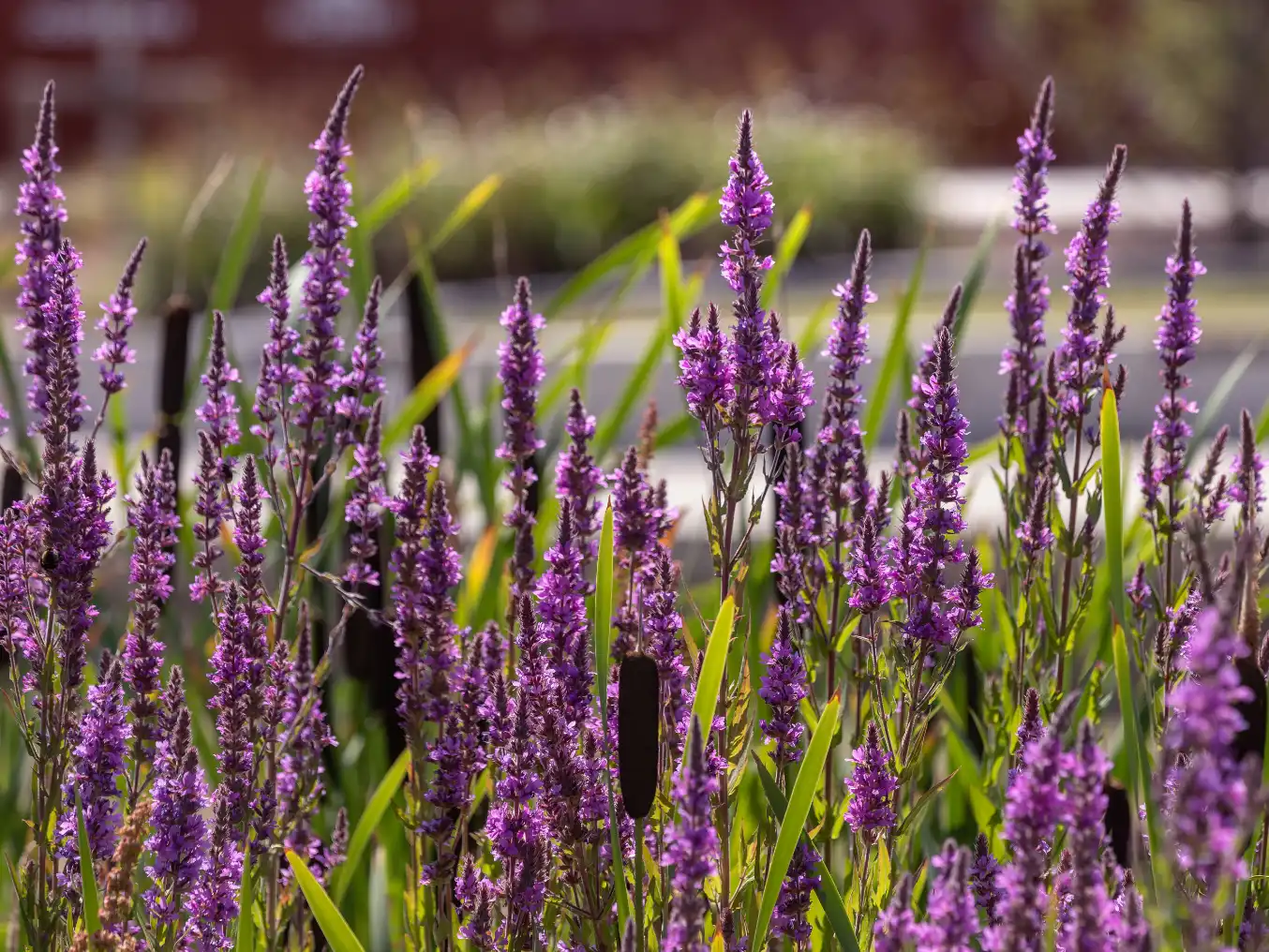
Getting close to nature
These enhancements contribute to the ecological health of Wintringham and the wider connecting areas of St Neots, creating a multifunctional space that allows people to engage with nature in meaningful ways.
The paths and wayfinding around this area and interpretation boards on the hides are being developed with the RSPB and Wildlife Trust, alongside our Wild Wintringham nature events for the local community. The area will open up to the community later in 2025.
